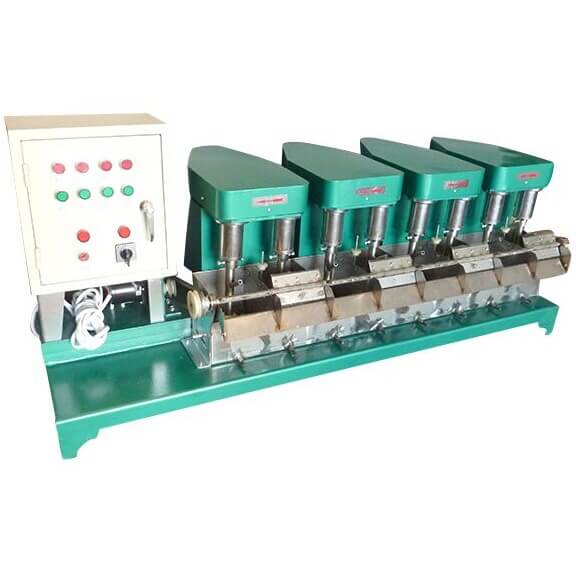BLACK SAND PROCESSING MACHINE
When your new RP-4 Gravity Shaker Table arrives, you be amazed at how compact this machine is. Checking it over , take it out of the crate, you’ll see it was well built.
When assembling the RP-4, it is very important to set it up correctly to get the best recovery. The unit needs to be bolted preferably to a concrete pad or bedrock when in the field. It can be weighted down with seven or eight large sandbags. Wooden stands will set up harmonics and vibrations in the unit. Vibrations will create a negative effect on the concentrating action of the deck and create a scattering effect on the gold. We would strongly advise getting the optional stand to mount it. See a detailed RP4 Shaker Table review.

Once you have the RP-4 mounted or weighted down, you will want to level it, place a level under the machine on the bar running attached to the two mounting legs. Use washers to get a precise level adjustment. Once mounted and leveled, use the adjustment screw to adjust the horizontal slope of the deck. It took me about 10 minutes of playing with the adjustment till you are satisfied the slope angle was where it needed to be. A general rule for good recovery is less grade for the table deck and as much water as possible without scouring off the fine gold particles.
When the table is set, wet down your black sand concentrates with water and a couple drops of Jet-Dry to help keep any fine gold from floating off the table. You are now ready to start feeding the RP-4.
DO NOT dump material into the feed tray. You want a nice steady feed without overloading the table. Use a scoop and feed it steadily. Watch the back where the small gold should concentrate. If you see fine gold towards the middle, adjust your table angle just a bit at a time till it is where it needs to be.
Don’t forget to tighten the adjustment screw on the side of the unit to avoid the table doing the Twist and the Shout!
Run a few buckets of black sand “tailings” that already panned out — just in case there might have been some gold left behind. It’s a good thing, too, because I pulled almost three pennyweights of gold out of my waste materials. That’s a pennyweight per bucket!
You could run all of you concentrates over this awesome little RP-4 Gravity Shaker Table. Some ran bottles No. 1 and No. 2 over the table a second time and cleaned it up some more, getting out almost all of the sand in No. 1 and removing more than half the sand from No. 2. It was amazing to see a nice line of fine gold just dancin’ down the table into the bottle. And, to think you were was about to throw away all of that black sand that still had color in it! This machine is small enough for the prospector and small-scale miner who, like me, wants all of the gold for his or her hard work. The 911MPE-RP-4 Gravity Shaker Table is also big enough to clean up bucket after bucket of concentrates from a big operation! The RP4 people came up with the solution for getting all of the gold!
 The RP-4 table can process up to 100 lbs. per hour of black sand magnetite or pulverized rock with little to no losses. The RP-4 uses a unique reverse polarity of rare earth magnets, which will cause the magnetite to rise and be washed off into the tails. This allows the micron gold to be released from the magnetite, letting the gold traveling to the catch. The RP-4 is compact and weighs 60 lbs. With a small generator and water tank, no location is too remote for its use. The RP-4 is a complete, ready-to-go gold recovery machine.
The RP-4 table can process up to 100 lbs. per hour of black sand magnetite or pulverized rock with little to no losses. The RP-4 uses a unique reverse polarity of rare earth magnets, which will cause the magnetite to rise and be washed off into the tails. This allows the micron gold to be released from the magnetite, letting the gold traveling to the catch. The RP-4 is compact and weighs 60 lbs. With a small generator and water tank, no location is too remote for its use. The RP-4 is a complete, ready-to-go gold recovery machine. THERE ARE NO SCREEN INCLUDED with the small shaking table. Use was reservoirs greater than 250 gallons and recycle all your water. Only 400 Watt of power is drawn by a typical pump. The small RP4 gold shaking has a “mini” deck of 13″wide x 36″ long = 3.25 square feet of tabling area. The RP-4 is the best and longest-selling small miner shaker table still on the market today.
THERE ARE NO SCREEN INCLUDED with the small shaking table. Use was reservoirs greater than 250 gallons and recycle all your water. Only 400 Watt of power is drawn by a typical pump. The small RP4 gold shaking has a “mini” deck of 13″wide x 36″ long = 3.25 square feet of tabling area. The RP-4 is the best and longest-selling small miner shaker table still on the market today. With many 1000s of units sold during the last 10 years! Review the RP-4 Operating Manual and Installation Guide lower on this page.
With many 1000s of units sold during the last 10 years! Review the RP-4 Operating Manual and Installation Guide lower on this page.






